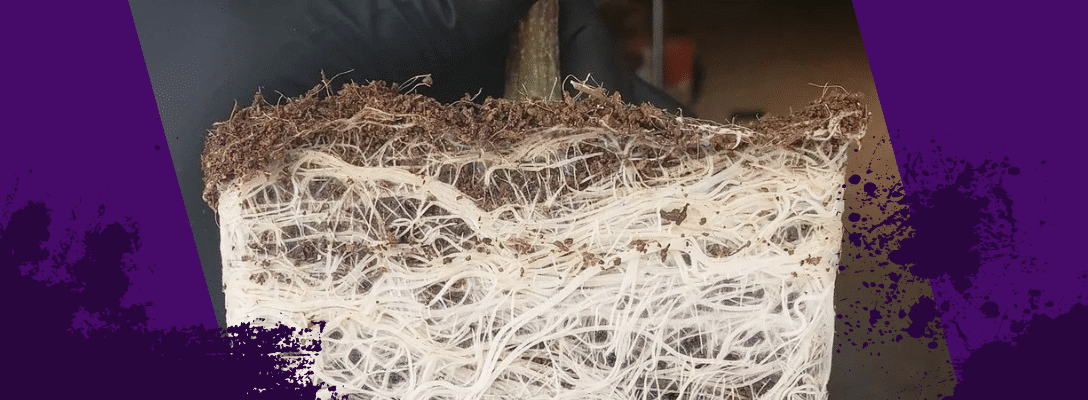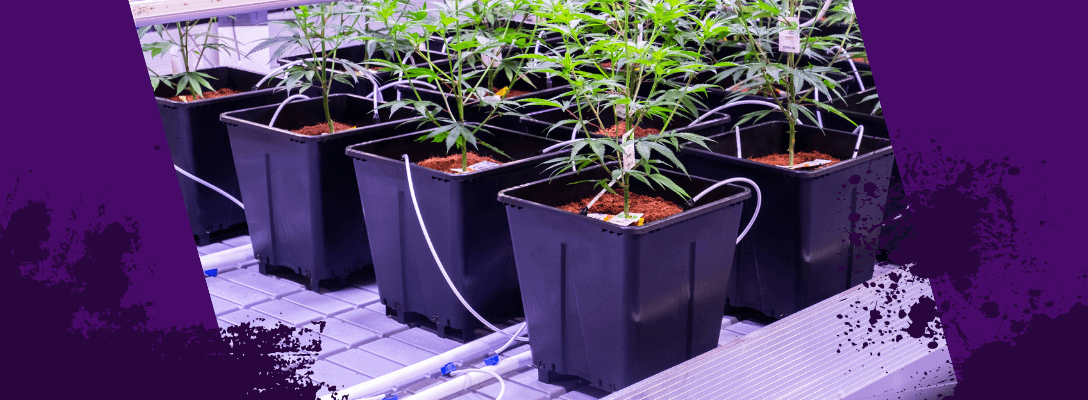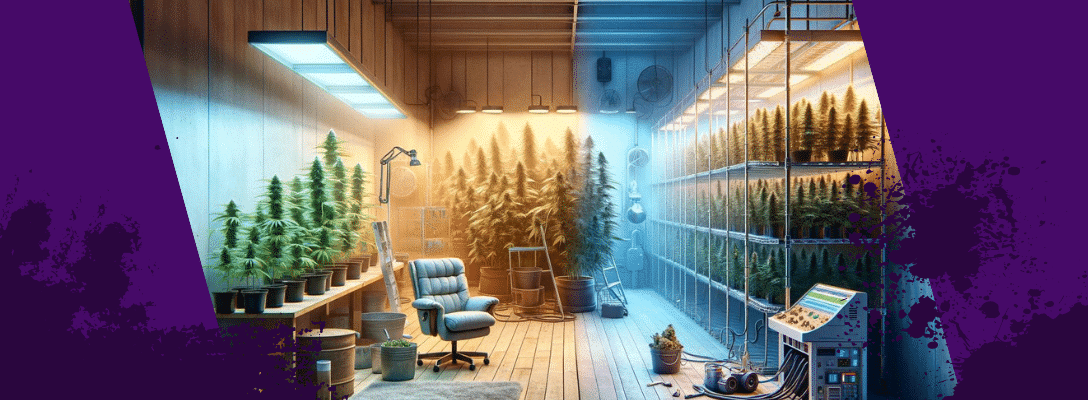Carbon is arguably one of the hottest properties in the plant world, especially for cannabis. It’s not only a key part of essential plant pigments like chlorophyll and carotenoids (used to drive photosynthesis) but also a central component of the precursors of key secondary metabolites in cannabis: cannabinoids and terpenes. Think of precursors like advanced building-blocks. In cannabis, these precursors include olivetolic acid, pyruvate and phenylamine—all carbon based molecules. It’s no wonder that carbon is in constant, high demand throughout the cannabis plant life-cycle.
Securing a sufficient supply of carbon is absolutely crucial for cannabis plants to reach their full genetic potential—and is often a limiting factor.
So, how do plants get hold of carbon? All essential nutrients, including carbon, enter the plant via two pathways—the roots and / or the leaves. Like oxygen, carbon is principally absorbed through the leaves from the air as carbon dioxide (CO2). One of the best known methods available to indoor growers to boost available carbon is CO2 supplementation. During the lights on cycle, additional CO2 is added to the growing environment from tanks or gas generators attached to a ‘sniffer’ and a regulator. Often, growers will add additional CO2 to the point where it reaches three or four times normal atmospheric levels. While the potential yield increases associated with this method are well-documented, it’s not always feasible for indoor growers as efficient CO2 supplementation necessitates sealing the cultivation space and invariably adding air conditioning and dehumidification.
What about feeding carbon via the roots? Now things get even trickier! You won’t find carbon listed among the ingredients of mineral base nutrients; only essential mineral macroelements (calcium, magnesium, nitrogen, phosphorus, potassium and sulfur) and micronutrients (boron, copper, iron, manganese, molybdenum and zinc) but not carbon! Limited amounts of carbon can be taken up by the roots in the form of bicarbonates (HCO3–) but this process is pH-dependent (bicarbonates are more available in alkaline conditions which inhibit the uptake of micronutrients including iron, manganese and boron) and costs the plant a lot of precious energy to convert into a usable form.
There are so many demands on carbon!
While plants normally rely on photosynthesis for the vast majority of their carbon needs, it’s worth noting that up to half of all the carbon sequestered by plants from CO2 is allocated for growth, uptake and assimilation of nutrients, as well as maintenance respiration. (Lambers et al, 2002a). Soil growers using mycorrhizal fungi increase the demand for carbon even further as mycorrhizal fungi can consume up to 20% of the carbon yielded from daily net photosynthesis. (Lynch and Ho, 2005).
Cannabis Defoliation Practices Can Further Reduce Stored Carbon Reserves
Finally, there’s the impact of ‘lollipopping’ and ‘schwazing’ cannabis plants. These practices involve stripping away lower leaves and shoots in order to focus the plant’s energies on canopy-level flowers. (Schwazing is a more extreme form of cannabis defoliation where virtually all foliage is removed at the end of the vegetative period and again at 14 – 21 days into flowering.) While some defoliation can be useful when applied in a balanced and timely manner, (especially for increasing air flow and enhancing light penetration) net photosynthesis is temporarily reduced after defoliation, negatively impacting the plant’s ability to capture carbon and increasing reliance on (diminished) stored carbon reserves.
Meeting the carbon requirements of cannabis is a major challenge—especially during the flowering stage.
It’s clear that plants need a whole lot of carbon. In fact, around 40 to 50% of the weight of dried cannabis flower is … you guessed it … carbon! As cannabis plants shift their focus to bud development, the need for carbon reaches its peak. This huge morphological change in cannabis can be a cause of significant stress to the plant. The last thing growers need at this point is a carbon bottleneck, and yet, for many growers, it often goes unrecognized.
Can growers remove the carbon bottleneck?
Okay, it’s high time for some good news. Green Sensation is a unique and powerful root-fed supplement designed to support cannabis plants during the crucial flowering stage. Its 4-in-1 booster formulation not only directly addresses the carbon needs of the plant but it also dramatically enhances overall plant health and yield.
Green Sensation:
Four Major Benefits for Craft Cannabis Growers
Heavier Buds
Green Sensation enhances the photosynthesis process by providing an additional carbon molecule directly to the roots. This leads to more efficient glucose production which the plant then invests in the growth and development of its buds, resulting in a heavier harvest.
Supports Terpenes and Cannabinoids
The supplemental carbon in Green Sensation also supports the production of important precursors to terpenes and cannabinoids found in cannabis. Additionally, it provides potassium, phosphorus, and iron—all crucial for the flowering phase—contributing to healthy cell division and leading to denser and firmer bud development.
Stress Resistance
Potassium in Green Sensation strengthens the plant’s structure, including stems and cell walls, enhancing the plant’s overall sturdiness and resistance.
Improved Nutrient Uptake
The carbon in Green Sensation is not only absorbed directly by the plant but also aids in mobilizing additional essential minerals.

Designed to be used from the fourth week of flowering, Green Sensation provides a rich source of carbon directly to the roots using an enhanced natural carbon compound. This approach bypasses the limitations of atmospheric carbon absorption, ensuring that plants have a consistent and readily available additional carbon source. What’s more, unlike bicarbonates, this carbon source can be assimilated by the plant without the need to expend any energy! By directly feeding carbon via the roots, Green Sensation supports a huge range of your plant’s metabolic processes, crucial for the development of dense, potent, and terpene-rich buds.
Green Sensation supplies carbon directly to where it’s needed most, ensuring that plants don’t waste energy converting other forms of carbon. This direct supplementation approach leads to more efficient nutrient uptake and supports the development of cannabinoids and terpenes.
Green Sensation is easy to use, making it perfectly suitable for all growing styles, from water
culture to substrates and soil. Green Sensation can be seamlessly incorporated into any organic or mineral-based feeding regime.
Growers who have used Green Sensation to meet the carbon needs of cannabis, especially during the flowering stage, report significant yield increases—as high as 25%! But Green Sensation doesn’t just add bulk mass to the harvest, it also supports a commensurate increase in cannabinoid and terpene production meaning you don’t sacrifice quality for quantity.

Are you ready to witness the difference Green Sensation can make for yourself?






